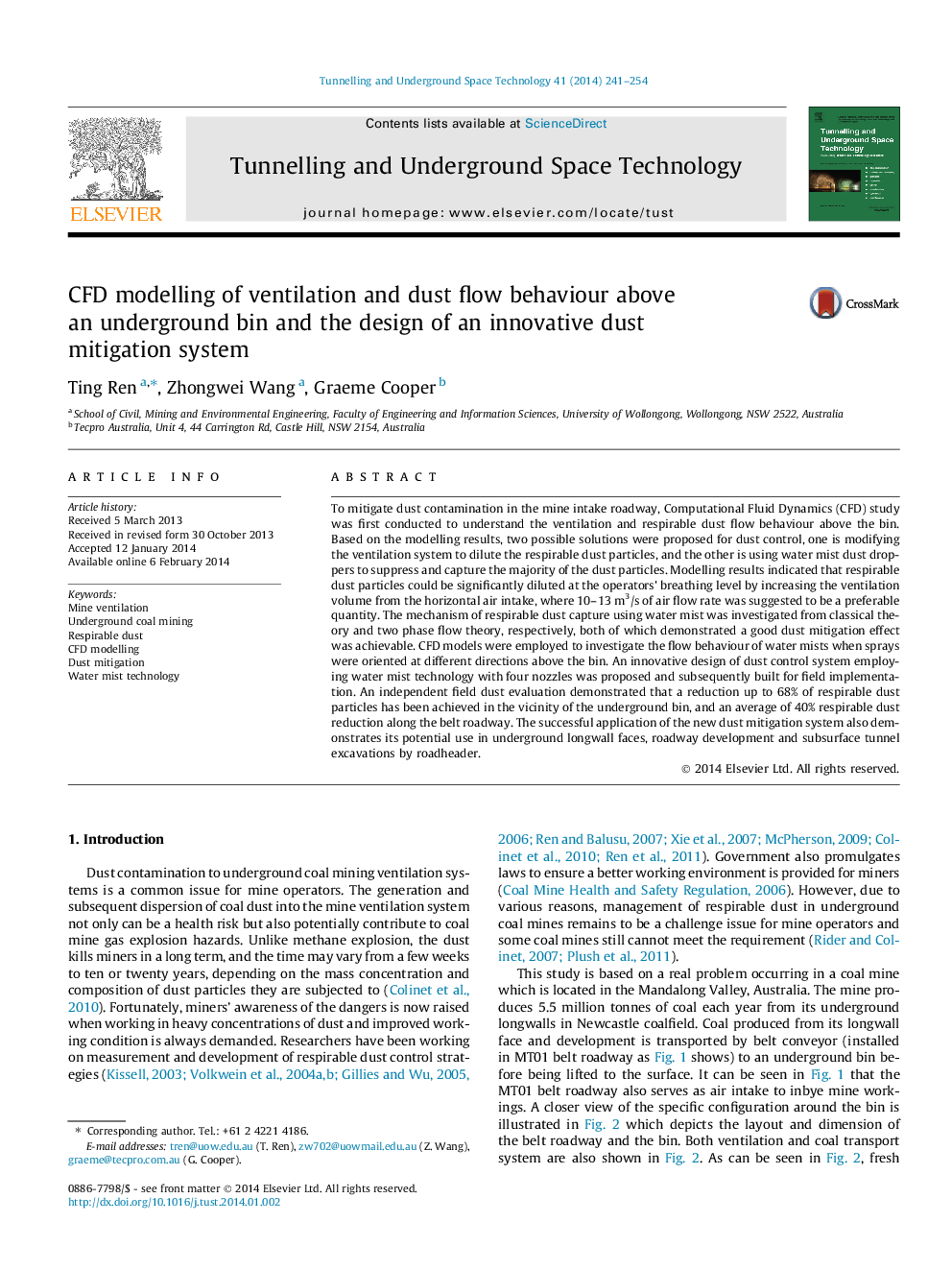| Article ID | Journal | Published Year | Pages | File Type |
|---|---|---|---|---|
| 312392 | Tunnelling and Underground Space Technology | 2014 | 14 Pages |
•CFD modelling of ventilation and dust dispersion patterns from an underground bin.•Impact of ventilation on dust distribution was investigated.•An innovative dust mitigation system was designed and installed in field.•A maximum of 68% respirable dust mitigation effect has been achieved.
To mitigate dust contamination in the mine intake roadway, Computational Fluid Dynamics (CFD) study was first conducted to understand the ventilation and respirable dust flow behaviour above the bin. Based on the modelling results, two possible solutions were proposed for dust control, one is modifying the ventilation system to dilute the respirable dust particles, and the other is using water mist dust droppers to suppress and capture the majority of the dust particles. Modelling results indicated that respirable dust particles could be significantly diluted at the operators’ breathing level by increasing the ventilation volume from the horizontal air intake, where 10–13 m3/s of air flow rate was suggested to be a preferable quantity. The mechanism of respirable dust capture using water mist was investigated from classical theory and two phase flow theory, respectively, both of which demonstrated a good dust mitigation effect was achievable. CFD models were employed to investigate the flow behaviour of water mists when sprays were oriented at different directions above the bin. An innovative design of dust control system employing water mist technology with four nozzles was proposed and subsequently built for field implementation. An independent field dust evaluation demonstrated that a reduction up to 68% of respirable dust particles has been achieved in the vicinity of the underground bin, and an average of 40% respirable dust reduction along the belt roadway. The successful application of the new dust mitigation system also demonstrates its potential use in underground longwall faces, roadway development and subsurface tunnel excavations by roadheader.
